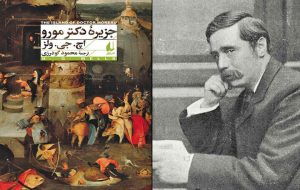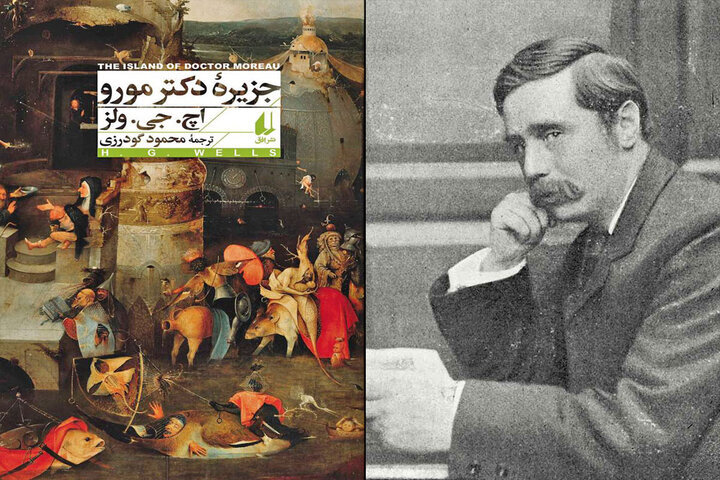H. G. Wells’ “The Island of Doctor Moreau” available in Persian
TEHRAN-The Persian Translation of the 1896 science fiction novel “The Island of Doctor Moreau” by English author H. G. Wells has been released in the bookstores across Iran. Mahmoud Goudarzi has translated the book that has been published by Ofoq Publication in its series of “Ofoq Classics”, Mehr reported. The novel is set between 21


TEHRAN-The Persian Translation of the 1896 science fiction novel “The Island of Doctor Moreau” by English author H. G. Wells has been released in the bookstores across Iran.
Mahmoud Goudarzi has translated the book that has been published by Ofoq Publication in its series of “Ofoq Classics”, Mehr reported.
The novel is set between 21 January 1887 to 5 January 1888. The text of the novel is the narration of Edward Prendick, a shipwrecked man rescued by a passing boat. He is left on the island home of Doctor Moreau, a mad scientist who creates human-like hybrid beings from animals via vivisection.
The novel deals with a number of themes, including pain and cruelty, moral responsibility, human identity, human interference with nature, and the effects of trauma. Wells described it as “an exercise in youthful blasphemy.”
“The Island of Doctor Moreau” is a classic work of early science fiction and remains one of Wells’ best-known books. The novel is the earliest depiction of the science fiction motif “uplift” in which a more advanced race intervenes in the evolution of an animal species to bring the latter to a higher level of intelligence. It has been adapted to film and other media on many occasions.
In the short essay “The Limits of Individual Plasticity” (1895), H.G. Wells expounded upon his firm belief that the events depicted in “The Island of Doctor Moreau” are entirely possible should such vivisective experiments ever be tested outside the confines of science fiction. Until recently, modern medicine has shown that non-human animals lack the necessary brain structure to emulate human faculties like speech. In addition, immune responses to foreign tissues make transplantation within one species very complicated, let alone between species. However, a team of researchers at Stanford University has successfully transplanted a cluster of living human brain cells from a dish in the lab to the brain of a newborn rat to study neurological conditions such as autism, ADHD, and schizophrenia.
Herbert George Wells (1866-1946) was an English writer, prolific in many genres. He wrote more than 50 novels and dozens of short stories. His non-fiction output included works of social commentary, politics, history, popular science, satire, biography, and autobiography. Wells’ science fiction novels are so well regarded that he has been called the “father of science fiction”.
In addition to his fame as a writer, he was prominent in his lifetime as a forward-looking, even prophetic social critic who devoted his literary talents to the development of a progressive vision on a global scale. As a futurist, he wrote a number of utopian works and foresaw the advent of aircraft, tanks, space travel, nuclear weapons, satellite television, and something resembling the World Wide Web. His science fiction imagined time travel, alien invasion, invisibility, and biological engineering before these subjects were common in the genre.
His most notable science fiction works include “The Time Machine” (1895), which was his first novella, “The Island of Doctor Moreau” (1896), “The Invisible Man” (1897), “The War of the Worlds” (1898), the military science fiction “The War in the Air” (1907), and the dystopian “When the Sleeper Wakes” (1910).
SS/SAB
